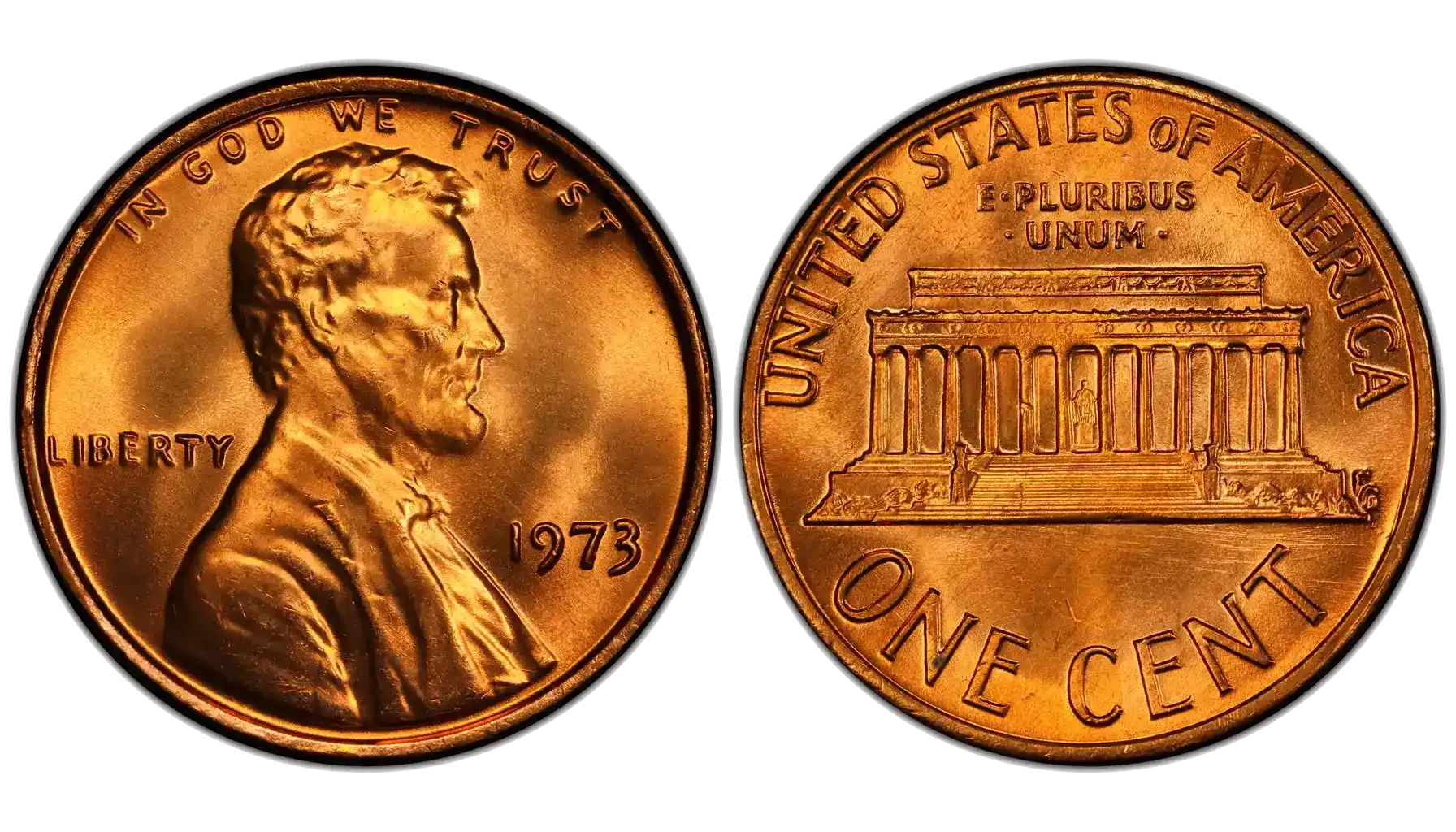Contents:
1945 nickels might look like ordinary coins — but they're anything but. They were forged during the final year of World War II, when the U.S. government altered the composition to save critical metals for the war effort. The result is a five-cent coin with 35% silver.
Yes, you read that right. Every 1945 nickel contains real silver, and depending on its condition and mint mark, its 1945 Jefferson nickel value could range from $1.50 to over $100. What was once a wartime necessity is now a collector's specimen.
So, how much is a 1945 nickel worth? How much silver is in a 1945 nickel? And why is an AI coin identifier a must in coin collecting?
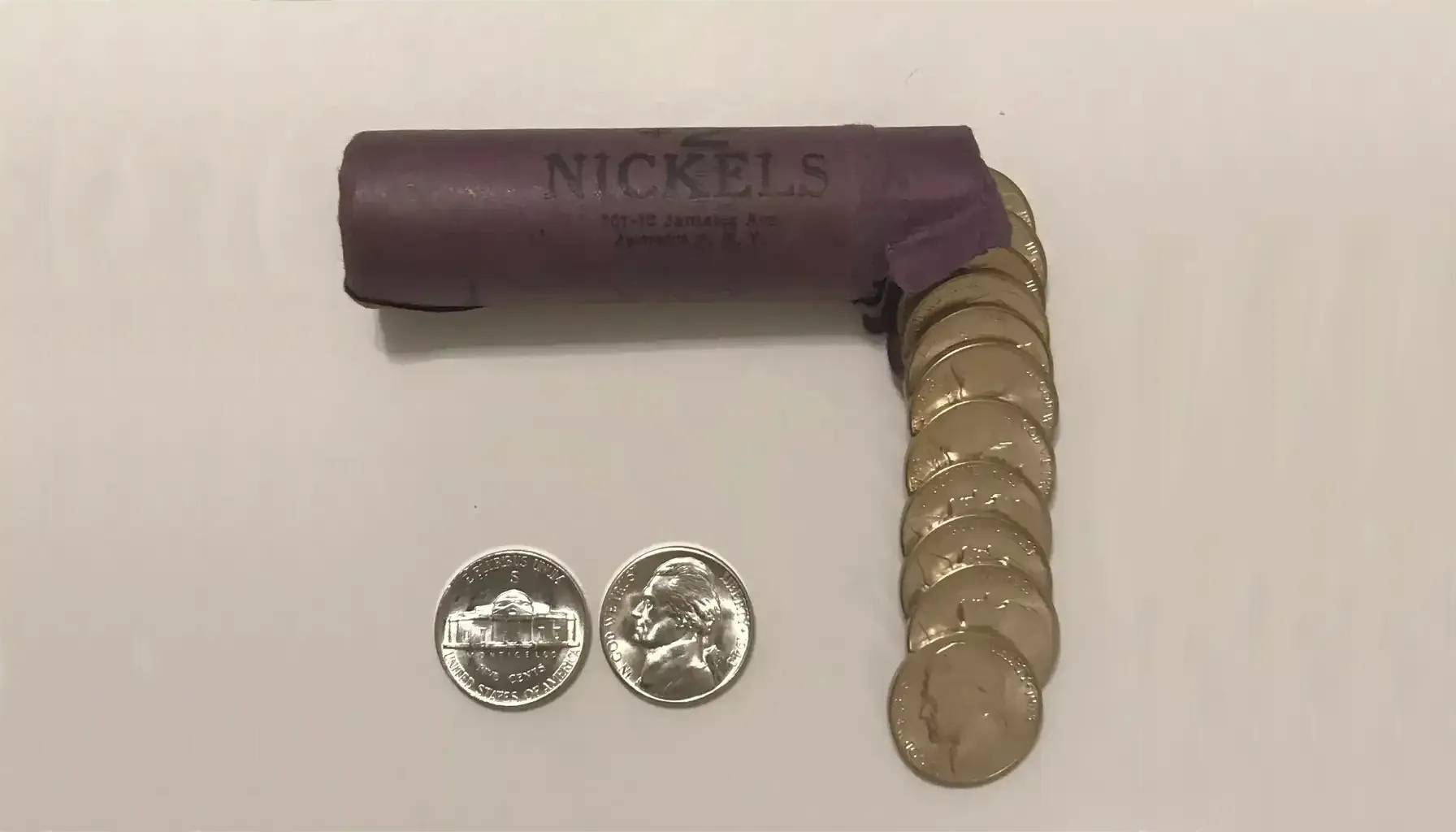
Coin Specifications
Specification | Details |
Denomination | 5 Cents |
Year | 1945 |
Type | Wartime Jefferson Nickel |
Obverse Design | Thomas Jefferson (by Felix Schlag) |
Reverse Design | Monticello (Jefferson’s home) |
1945 Nickel Silver Content | 56% Copper, 35% Silver, 9% Manganese |
Silver Content | 0.05626 troy oz (1.75 grams) |
Total Weight | 5.00 grams |
Diameter | 21.2 mm |
Thickness | 1.95 mm (approx.) |
Edge | Plain |
Mint Marks | P (Philadelphia), D (Denver), S (San Francisco) |
Mint Mark Location | Large letter above Monticello on reverse |
Mintage Numbers | P: 119,408,000 D: 37,158,000 S: 58,939,000 |
Designer | Felix Schlag |
The War-Era: Why the Composition Changed
Nickel metal was a strategic material in the 1940s, vital for manufacturing armor and artillery. To conserve supplies, the U.S. Mint temporarily replaced the standard alloy (75% copper, 25% nickel) with a mix of copper, silver, and manganese.
This change occurred between mid-1942 and 1945, giving rise to what numismatists now call “Wartime Coins” that are often referred to the 1942 to 1945 silver nickels value.
Mint Marks
While many look similar at first glance, the 1945 silver issue has a special identifier: a large mint mark directly above Monticello's dome on the reverse side — a feature unique to silver wartime nickels. Here’s what to look for:
Date: 1945
Reverse side: Mint mark above the building
Composition: 35% silver (not magnetic)
Mint | Mint Mark | Mintage | Scarcity |
Philadelphia | P | 119,408,000 | Common |
Denver | D | 37,158,000 | Scarcer |
San Francisco | S | 58,939,000 | Moderate |
Only 1942–1945 war nickels feature this large mint mark placement.
1. "P" – Philadelphia Mint, 1945 P Jefferson Nickel
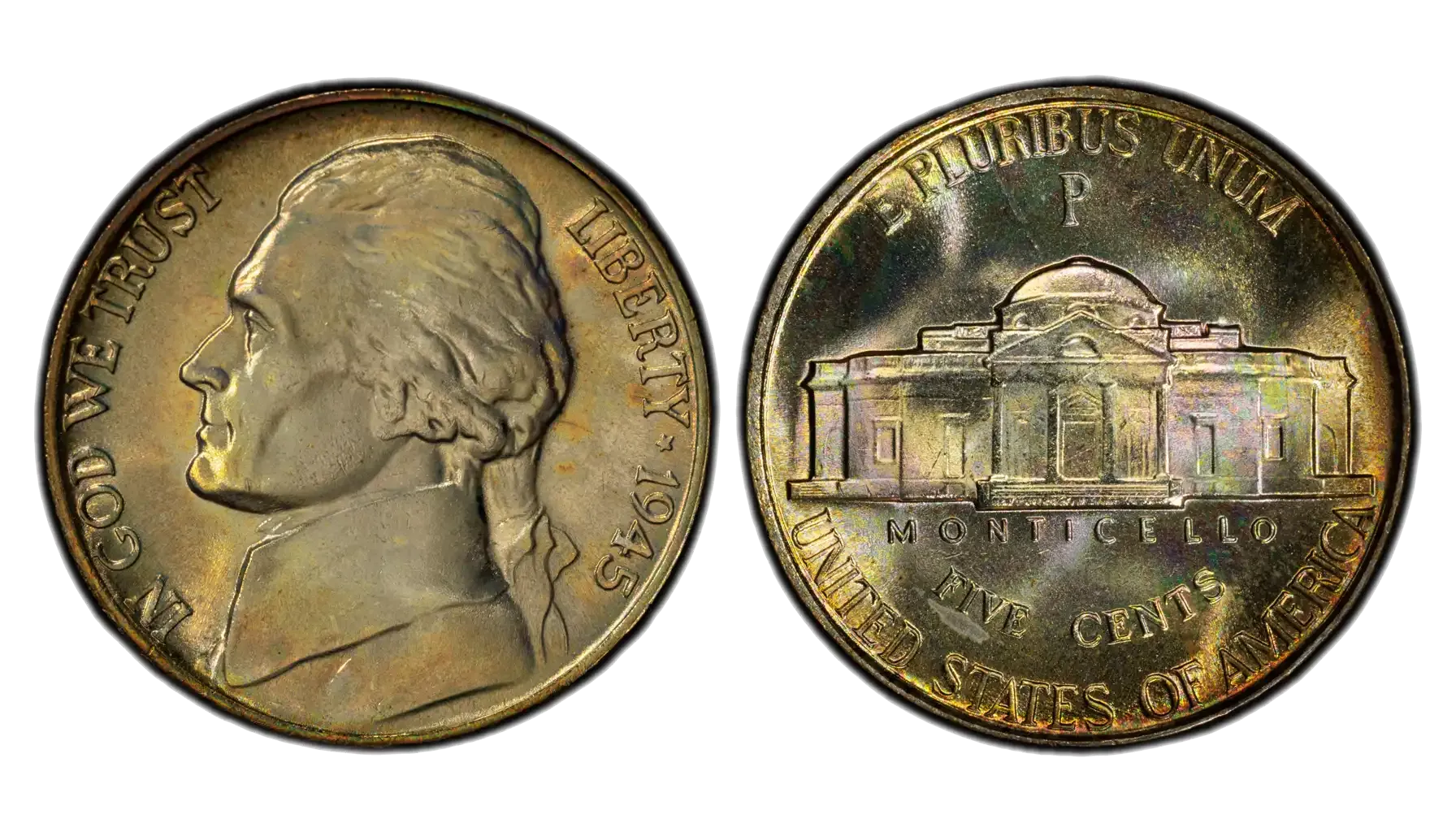
First use of the "P" mint mark on U.S. coinage.
Mintage: 119,408,000 (highest of the three).
Common in most grades.
1945 nickel P value:
In circulated condition: close to melt value (~$1.50–$2.00).
In mint state (MS65+): can fetch the $25–$45 1945 P nickel value.
With Full Steps: up to $90–$110, but not as rare as Denver examples.
2. "S" – San Francisco Mint, 1945 S Nickel
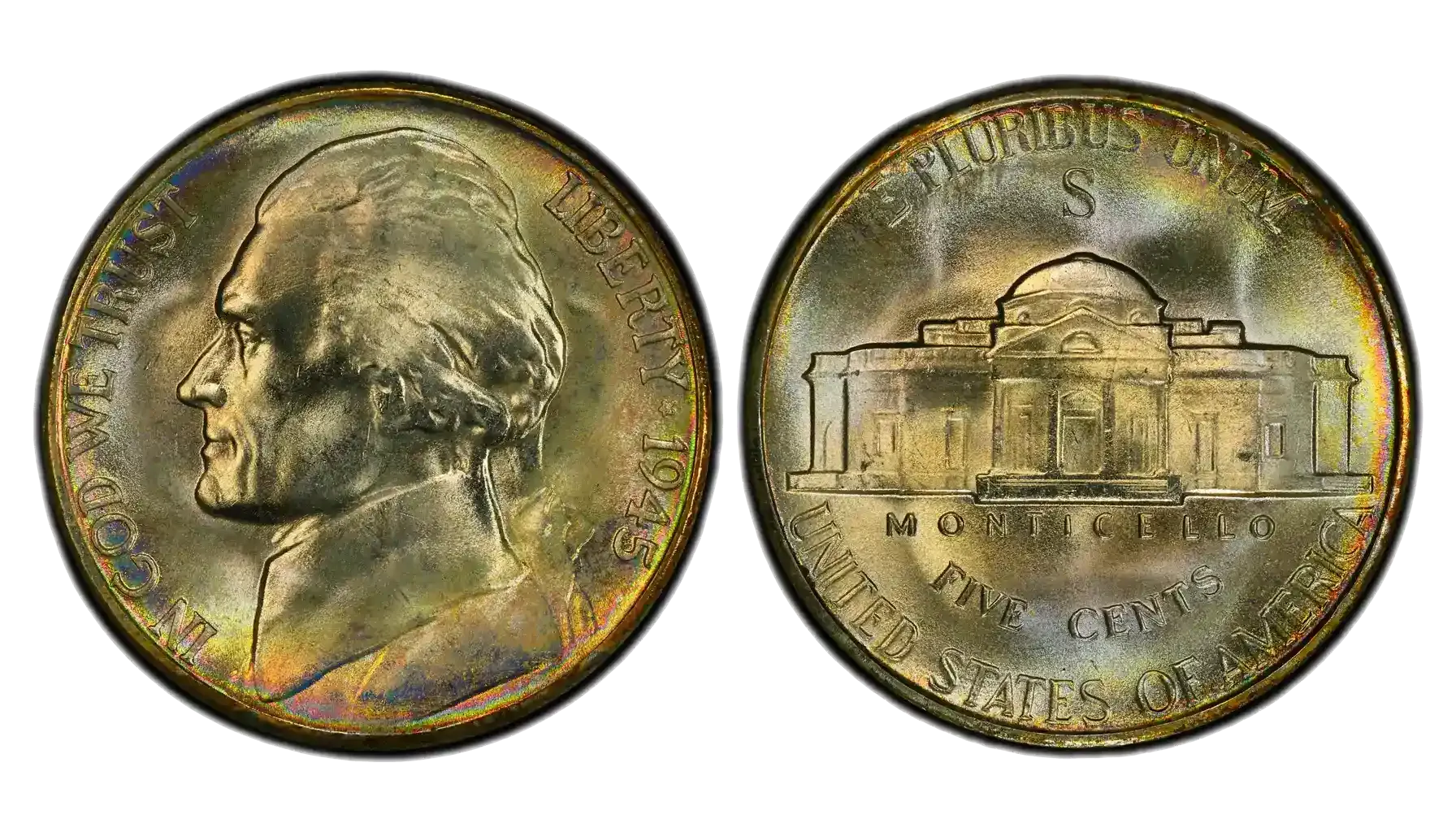
Mintage: 58,939,000 (moderate).
Less common than Philadelphia issues.
1945 S nickel value today:
Slight premium in circulated grades.
The 1945 S Jefferson nickel value in uncirculated grades: $30–$60 depending on quality.
Full Steps examples: often $95–$120+.
3. "D" – Denver Mint, 1945 Nickel D

Mintage: 37,158,000 (lowest).
Most sought-after among collectors.
Especially rare in high grade with Full Steps.
1945 D nickel value:
In circulated condition: similar to other mint marks.
In MS65+: can sell for $35–$60.
MS67 with Full Steps: often exceeds $100+.
Key Takeaways
Always check the reverse side above Monticello for the mint mark.
Is a 1945 nickel silver? All of them contain 35% silver, giving them a melt value floor (~$1.87 as of May 2025).
Mint marks affect value in higher grades and with desirable strike features like Full Steps.
Denver-minted coins are the rarest and carry the most premium when well-preserved, especially 1945-D nickel error pieces.
1945 War Nickel Value
Grade | 1945-P Nickel Value | 1945-D Nickel Value | 1945-S Nickel Value | Notes |
G4 (Good) | $1.50 | $1.50 | $1.50 | Melt value baseline |
F12 (Fine) | $2.00 | $2.00 | $2.00 | Slight premium |
EF40 (Extremely Fine) | $2.75 | $3.00 | $3.25 | Collector interest begins here |
AU50 (About Uncirculated) | $4.00 | $4.25 | $4.50 | Crisp details, some luster |
MS65 (Mint State) | $25–$45 | $30–$55 | $35–$60 | Sharp strike, no wear |
MS67 Full Steps | Up to $100+ | Rare | Rare | Top-grade investment piece |
Current Silver Melt Value Table
As of May 23, 2025, the melt 1945 silver nickel value is approximately $1.87. This valuation is based on the current silver spot price of $33.17 per troy ounce.
Silver Content: 0.0563 troy ounces
Silver Value: $1.87
Note: The melt value reflects the intrinsic metal worth and does not account for any numismatic (collector) premium.
Silver Melt Values for Common U.S. Silver Coins
Type | Composition | Silver Content (troy oz) | Melt Value (USD) |
1942–1945 War Nickel | 35% Silver | 0.0563 | $1.87 |
Roosevelt Dime (1946–1964) | 90% Silver | 0.0723 | $2.40 |
Washington Quarter (1932–1964) | 90% Silver | 0.1808 | $6.00 |
Kennedy Half Dollar (1964) | 90% Silver | 0.3617 | $12.00 |
Morgan/Peace Dollar | 90% Silver | 0.7734 | $25.67 |
Disclaimer: These values are calculated using the current silver spot price of $33.17 per troy ounce.
Calculate Melt Value for Multiple Pieces
What is a 1945 nickel worth? To determine the melt value for multiple 1945 silver nickels:
Per Coin: $1.87
Per $1 Face Value (20 coins): $1.87 × 20 = $37.40
This calculation is based solely on silver content and does not include any additional value from copper or manganese components.
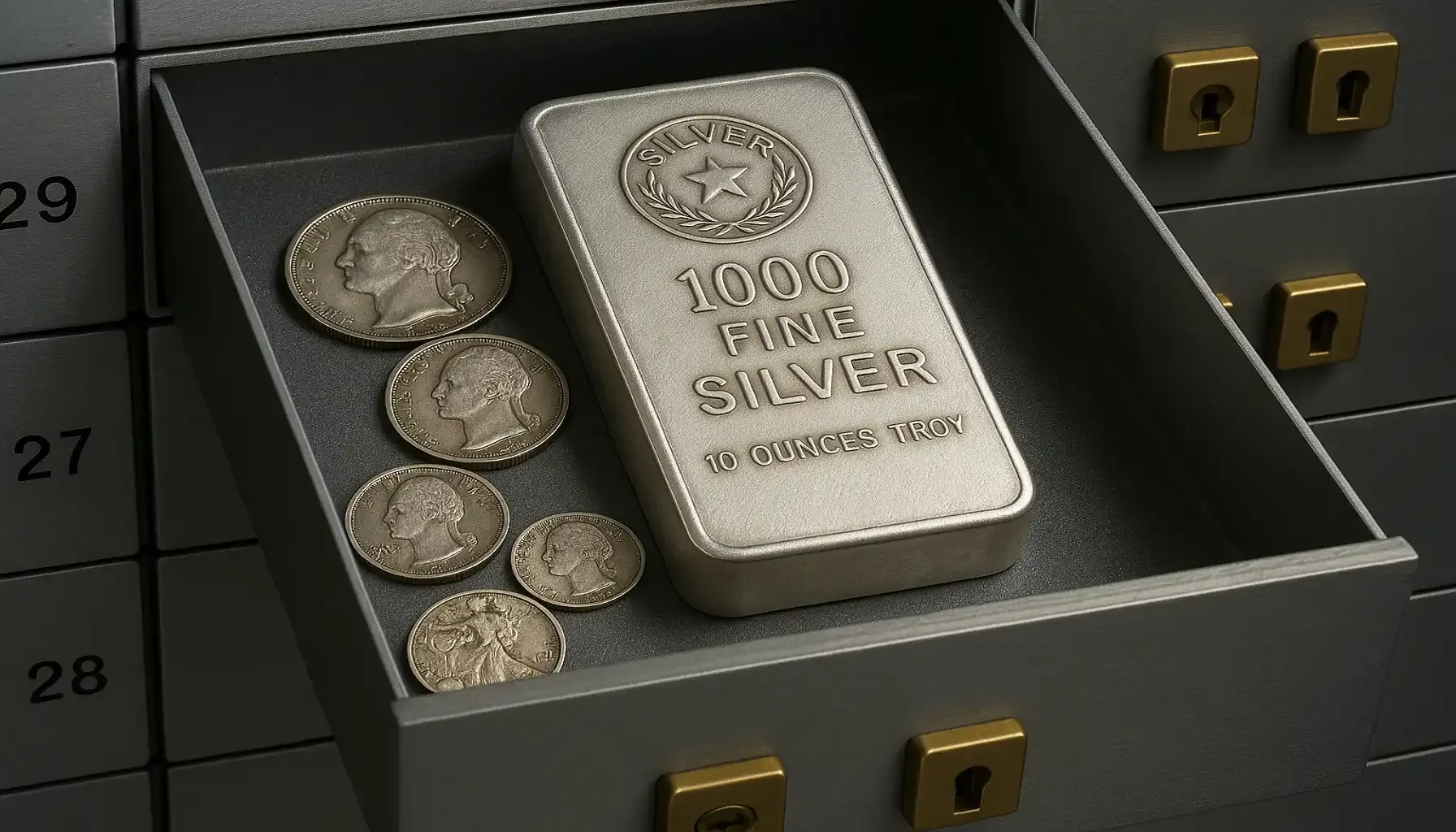
What Affects the Valuable 1945 Nickel Value?
Aside from condition, several factors can boost your coin's value:
1. Errors & Varieties
Double dies, repunched mint marks (RPMs), or off-center strikes can skyrocket a coin’s worth. These rarities can push values into three-digit territory.
1945 Nickel Error | Description | Value Impact |
Repunched Mint Mark (RPM) | A doubled or repositioned mint mark, typically visible under magnification. | $10 to $50+ depending on clarity and grade |
Double Die Obverse (DDO) | Doubling of letters or numbers on the front of the coin (e.g., “IN GOD WE TRUST”). | Rare – up to $100+ in high grades |
Double Die Reverse (DDR) | Doubling on the Monticello building or “FIVE CENTS.” | $20 to $75+ if dramatic and certified |
Die Cracks / Cuds | Raised, irregular lines or blobs from cracked dies, often near the rim. | $5 to $25 depending on size/location |
Off-Center Strike | Coin struck outside its central alignment; part of design is missing. | $15 to $100+ (higher if date is visible) |
Clipped Planchet | A curved or straight “bite” missing due to a misfed blank. | $10 to $40 depending on clip shape and size |
Lamination Error | Flaking or peeling metal due to improper bonding in the planchet. | $5 to $25 based on severity |
Strike Through | Object or debris struck into the coin surface (e.g., cloth, grease). | $10 to $75+ depending on visibility and uniqueness |
2. Professional Grading
Coins graded by PCGS or NGC with Mint State certification get maximum attention (and price).
Want to ID your coin quickly? Try Coin ID Scanner — an app that helps collectors identify coins and market prices in seconds.
3. Collector Demand
While the Philadelphia mint produced the most (do not confuse with a 1945 nickel no mint mark that doesn't exist), high-grade coins from Denver or San Francisco are more sought-after.
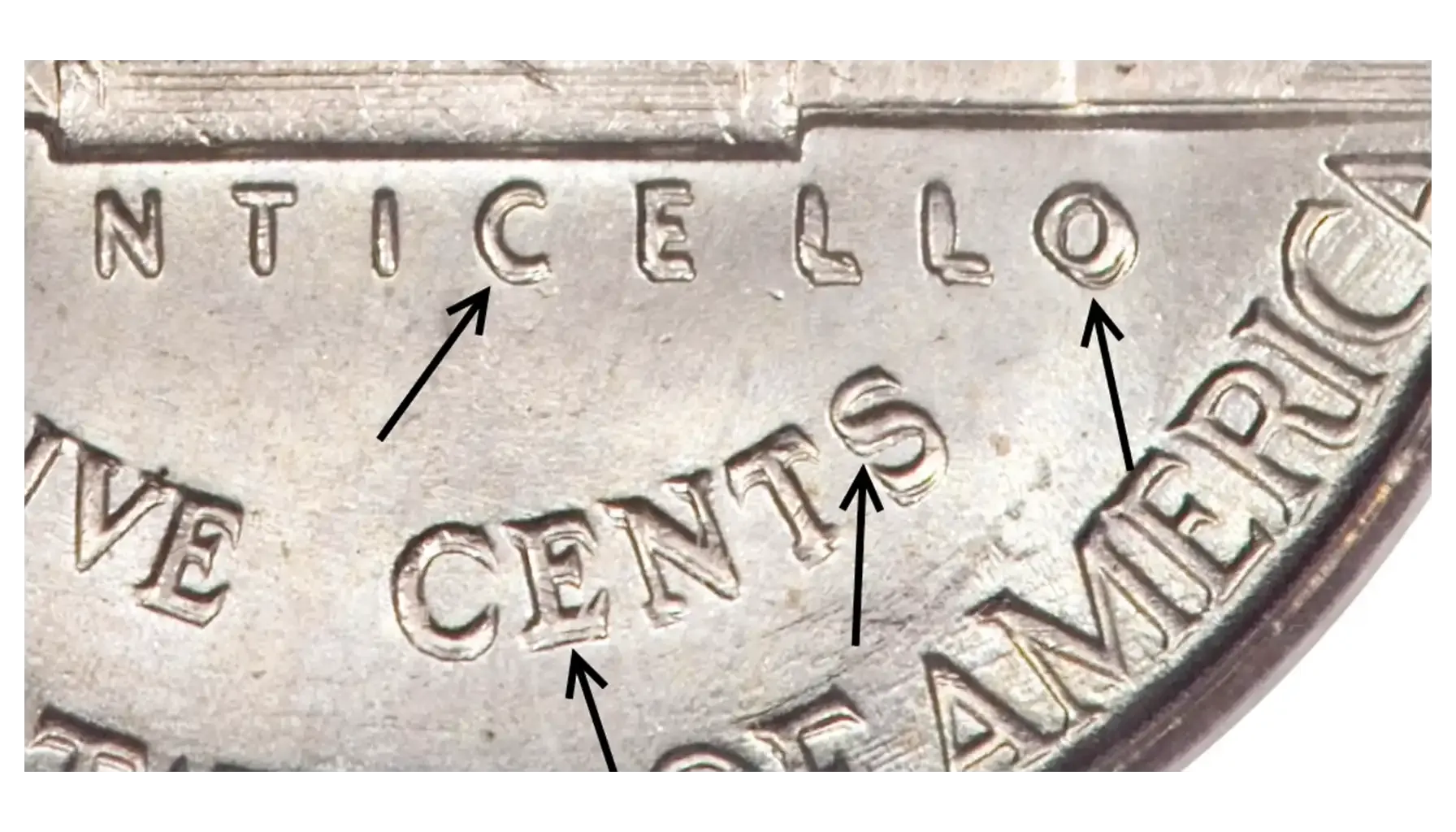
Is a 1945 Nickel Worth Anything?
Quick Recap: What to Remember
Are 1945 nickels silver? 35% silver composition
Large mint mark above Monticello = wartime issue
Worth $1.50 to $100+ based on grade
Watch for errors and Full Steps for premium value (e.g., check the 1945-S nickel error value)
Use apps like Coin ID Scanner to confirm details and the 1945 nickel S value (or other mints)
FAQs
How do I know if my coin has Full Steps, and why does it matter?
“Full Steps” refers to the horizontal steps on the Monticello building on the reverse. To qualify, a coin must have five (or six) complete, uninterrupted steps visible under magnification. These Full Steps indicate an exceptionally strong strike and are much rarer — especially on wartime ones like the 1945-D.
Here's how to check:
Use a 10x magnifying glass or digital scope.
Look directly below the pillars of Monticello.
If you see clear, uninterrupted lines across all steps — no merging or fading — you may have a Full Steps example.
Coins with Full Steps are significantly more valuable, sometimes fetching two to three times more than regular mint state examples.
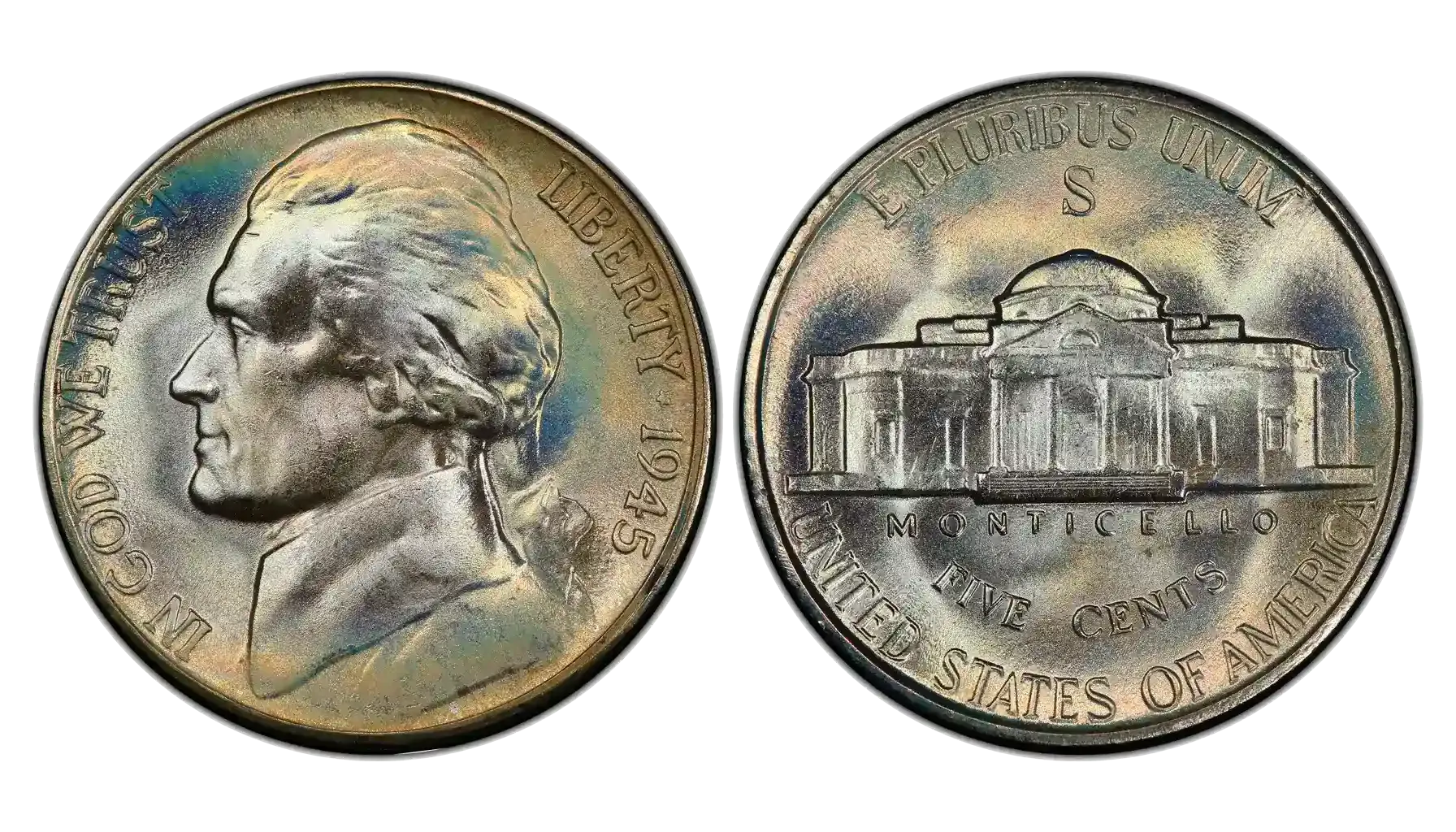
Are all 1945 nickels made of silver, or are there exceptions?
Yes, all are made with 35% silver — there are no known exceptions. The wartime silver alloy was used for all nickels minted from mid-1942 through the end of 1945. That said, it's possible to encounter altered or counterfeit coins where mint marks were added to non-silver coins to deceive collectors. To verify authenticity:
Check for the large mint mark above Monticello — this placement is unique to war nickels.
Weigh the coin — authentic silver ones should weigh around 5.00 grams.
Use a precious metal tester or magnet (they’re non-magnetic due to silver content).
What’s the difference between a proof coin and a regular strike?
There are no official proof nickels for 1945. The U.S. Mint halted proof coin production during World War II (1943–1949) to conserve resources. However, you might come across exceptionally well-struck examples or coins with deep reflective surfaces — sometimes marketed as “proof-like.”
If a seller claims to offer a "1945 proof nickel," it’s either mislabeled or misleading.

Why are some 1945 nickels toned or discolored, and does that affect value?
Discoloration — known as toning — is common in silver-containing coins due to oxidation and environmental exposure. On 1945 ones, toning may appear as shades of blue, gold, violet, or even black. This happens naturally over time, especially if the coin was stored in paper rolls, coin albums, or humid environments.
Does it hurt the 1945 S silver nickel value?
Natural, attractive toning can actually increase a coin’s appeal and value, especially among collectors who favor originality.
Ugly or uneven toning may lower eye appeal, but not necessarily the base value.
Artificial toning (chemically induced) is frowned upon and can significantly reduce value once detected.
In short: Don’t clean it, and don’t worry too much about color — sometimes, toning is good.

